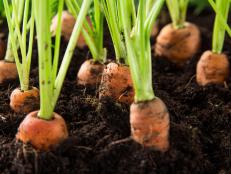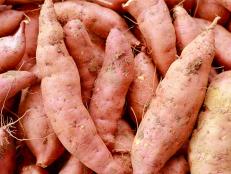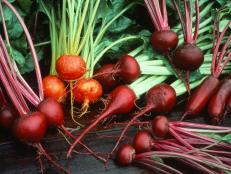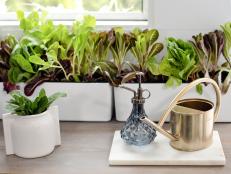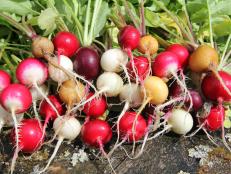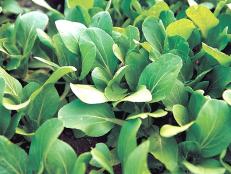How Do You Know When Carrots Are Ready to Harvest?
Size, color and timing are all factors that determine when to pick your garden carrots.

Shutterstock/Iakov Filimonov
Carrots are a relatively easy crop to grow in the garden, whether in the ground, in raised beds or in containers. Give them loose garden soil and thin them appropriately at seedling stage, and you’ll likely have success growing carrots.
Carrots should be ready for harvest about 60-80 days after sowing seeds, depending on the variety. The tops of the carrot roots will be about 3/4 to 1 inch in diameter and likely starting to pop out of the soil, though not necessarily. They will also be vibrant in color. To harvest, loosen soil around the carrot with a spade or trowel before pulling up from the greens; this will help avoid breaking the greens off from the carrot roots.
Carrots mature roughly around the same time, but you don’t have to harvest them all at once. Leaving them in the soil is the best preservation. If cold weather is coming, protect the carrots from freeze with extra mulch or by covering.
How to Store Carrots
To store your carrots in the fridge, trim off the greens, leaving about an inch. You can save the greens for another use or compost them. Place carrots in a container of water and place in the refrigerator. If the water gets cloudy before you get around to eating the carrots, you can refresh the water. This method keeps fresh carrots crispy for more than a week or two.
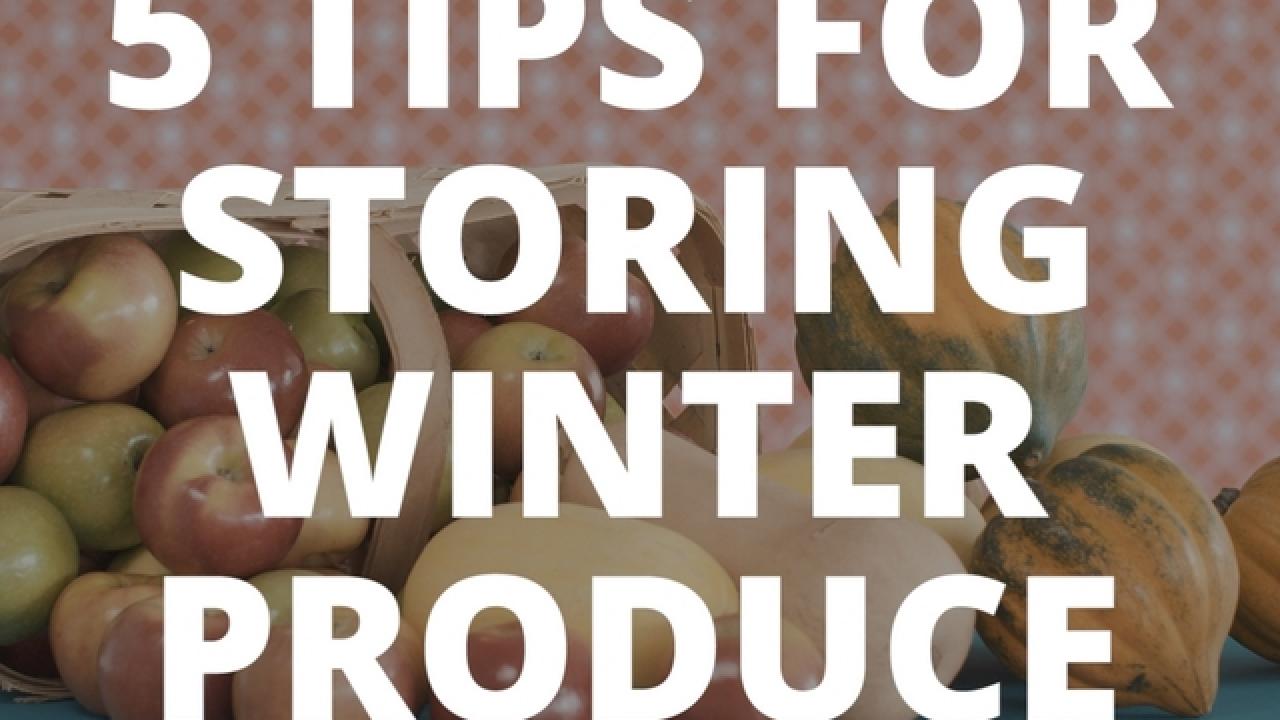
Growing Carrots
Carrots grow best in cool weather, so plant them in early spring for an early summer harvest, or late summer for a fall and early winter harvest. They are easy to grow from seed. Create thin rows, or furrows, in the soil using your finger. Sprinkle seeds in the row, about 15 seeds per foot. Lightly cover the seeds with soil and water gently.
Carrot seeds are slow to germinate, so be patient. It may take 2-3 weeks for your carrot plants to show signs of life and pop out of the ground. In a few more weeks, you’ll have many seedlings and need to thin them out. When seedlings are about 2 inches tall, thin to one plant every 4-6 inches. Rather than pulling them out, snip the plants off at soil level to avoid harming nearby seedlings.
Give your carrots consistent water as they grow, about 1 inch per week. Mulch around the plants to keep soil moist and weeds at bay. As the carrot roots begin to push up from the soil, cover them with mulch to avoid discoloration from sunlight. You can fertilize carrot plants but don’t go overboard, as too much nitrogen will grow beautiful carrot greens but not the roots below.
Gardeners in warmer climates may be able to grow carrots through the winter by mulching them well, but in climates where the ground freezes and temperatures are consistently below 32 degrees Fahrenheit, it’s best to harvest all carrot in late autumn.






